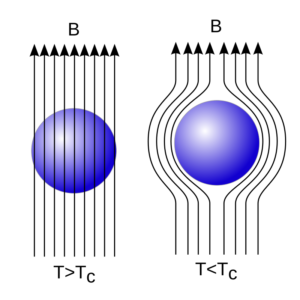Rectangular waveguide
- A rectangular waveguide is a hollow metallic tube with a rectangular cross section.
- In figure a rectangular waveguide is shown.

- It has cross sectional length a and b and the z-axis is parallel to the axis of the tube.
- Let the conductivity of the metal be infinite and its inner portion be filled with a lossless dielectric medium.
Transverse electric (TE) wave
- For TE mode, Ez (x, y) = 0 everywhere, Hz (x, y) exist.
- So Hz satisfies the wave equation

- Boundary conditions

- The L.H.S. of this equation is only the function of x, and its R.H.S. is only the function of y.
- Since both are equal to each other so they will be separately equal to a constant.


- At x = 0, dX/dx = 0, and at x = a, dX/dx = 0
- At y = 0, dY/dy = 0, and at y = b, dY/dy = 0
- At x = 0, dX/dx = 0

- At x = a, dX/dx = 0

- At y = 0, dY/dy = 0

- At y = b, dY/dy = 0


- Here m and n are two parameters and a set of given values of m, n defines a waveguide mode, known as m, n waveguide mode for TE wave (TEmn mode)
Cut off frequency and wavelength

- This is cut off wavelength.

- This is cut off frequency.
- The cut off frequency is the frequency at which, and below which no wave propagate through the guide.
- If m = n = 0, then it gives a static field which do not represent a wave propagation, so these values are excluded.
- Thus TE00 mode does not exist.
- If a < b, then the lowest cut off frequency is obtained with m = 0 and n = 1, then
(ωc)01= πc / b
- The mode which has lowest cut off frequency is known as principal mode or dominant mode.
- Thus TE01 mode is dominant mode.
Phase velocity and group velocity

- If λ0 = λc , then vp = ∞
- Thus at cut off frequency the phase velocity become infinite.
- The group velocity is the velocity with which the energy is propagated along the axis of the guide.

- If λ0 = λc , then vg = 0
Transverse electric and magnetic field intensity


- By using above equations we can determine the values of Ex(x, y), Ey(x, y), Hx(x, y) and Hy(x, y) easily.
Transverse magnetic (TM ) wave
- For TM mode, the Hz (x, y) = 0 everywhere, Ez (x, y) exist.
- So Ez satisfies the wave equation

- Boundary conditions

- Thus in TE and TM modes of a rectangular waveguide have the same set of cut off frequencies.
- In TM mode the lowest mode or dominant mode is TM11.
- The cut off frequency of dominant mode in TM wave is

- To know in detail about Rectangular waveguide click here.
Our other websites
https://vacancy.sacademy.co.in
Our YouTube channels


